Brighton’s unheralded role in Hollywood: When the Seagulls swooped in to help save “superstar club” Wrexham AFC
This is the story of how Seagulls fans helped to write a Hollywood ending for another club 253 miles away.
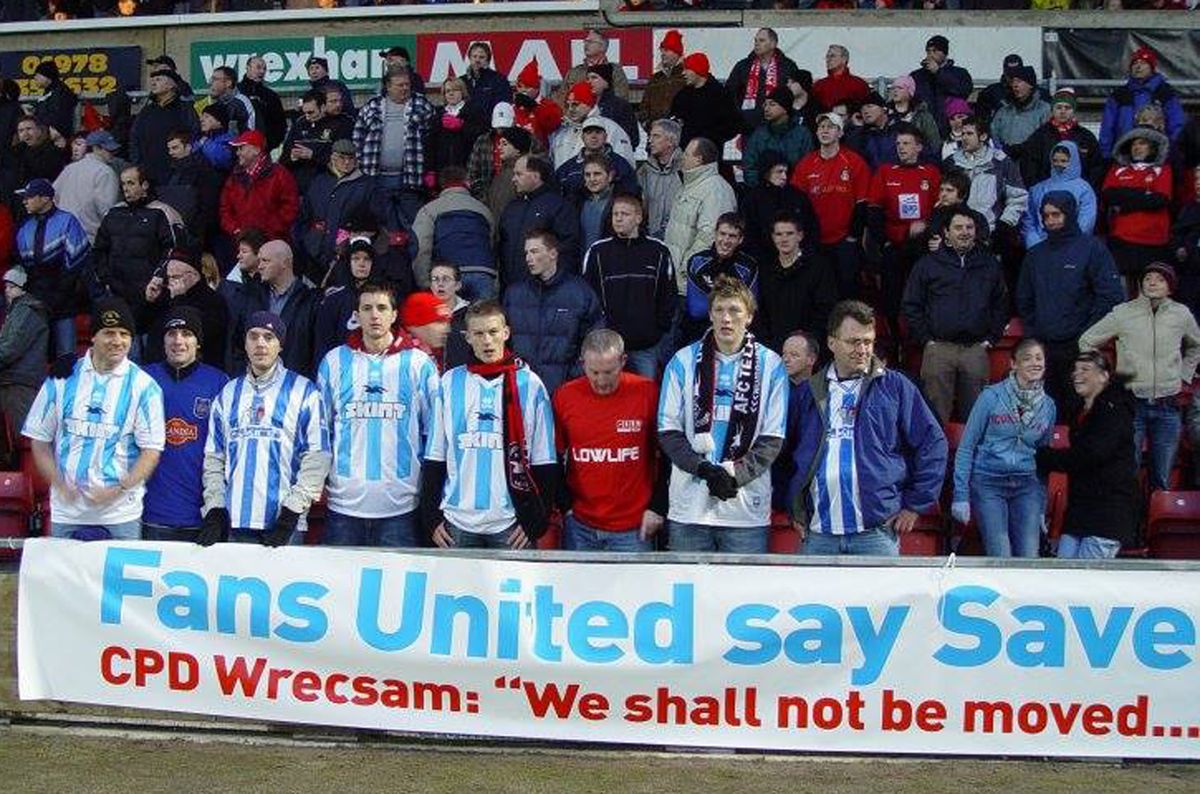
In 2021, movie stars Ryan Reynolds and Rob McElhenney officially purchased Wrexham AFC and changed the face of football ownership forever. But things might have been very different if it hadn’t been for the people of Brighton. This is the story of how Seagulls fans helped to write a Hollywood ending for another club 253 miles away, Gareth Lloyd writes.
There was a time not so long ago when the sight of Michael Portillo at Wrexham General train station was a local celeb-spotting story to top them all. Nowadays, half the town can tell you they’ve shaken hands with A-lister Ryan Reynolds or posed for a picture with It’s Always Sunny in Philadelphia creator Rob McElhenney.
Since Deadpool and Mac stepped off the screen and into North Wales to buy a football club, Wrexham has been up in lights - revelling in the role of a lifetime as a Hollywood fairytale unfolds on its doorstep.
The club is wealthy. The team are winning. Pubs are packed. Crowds are huge. Local business is booming. The entire town is tingling with excitement.
Wrexham AFC’s invitation to the red carpet was unexpected and extraordinary, yet it also felt like worthy reward. After decades of arduous struggle, with the football club coming to the brink of extinction more than once since the turn of the millennium, the fanbase feels a justified beneficiary of the Tinseltown treatment. For the first time in years, this town and its team can finally smile again. And the LA cameras are shooting it all for a brand new TV show.
But if there’s a best supporting actor award in Wrexham’s feel-good production - it’s Brighton.
Sixteen years before most Hollywood celebs had even heard of The Racecourse Stadium, it was Brighton fans who were fighting tooth and nail to save it.
On Saturday 20 November 2004, a flock of seagulls descended on Wales in a jaw-dropping territorial display against the developers who were attempting to tear down Wrexham’s ground for cash, flying 250 miles to show support for a community with whom they had no previous affiliation, alliance or affinity.
And they brought 1,000 other fans from around the country with them.
This is the story of how it all unfolded.
Stitched up good and proper
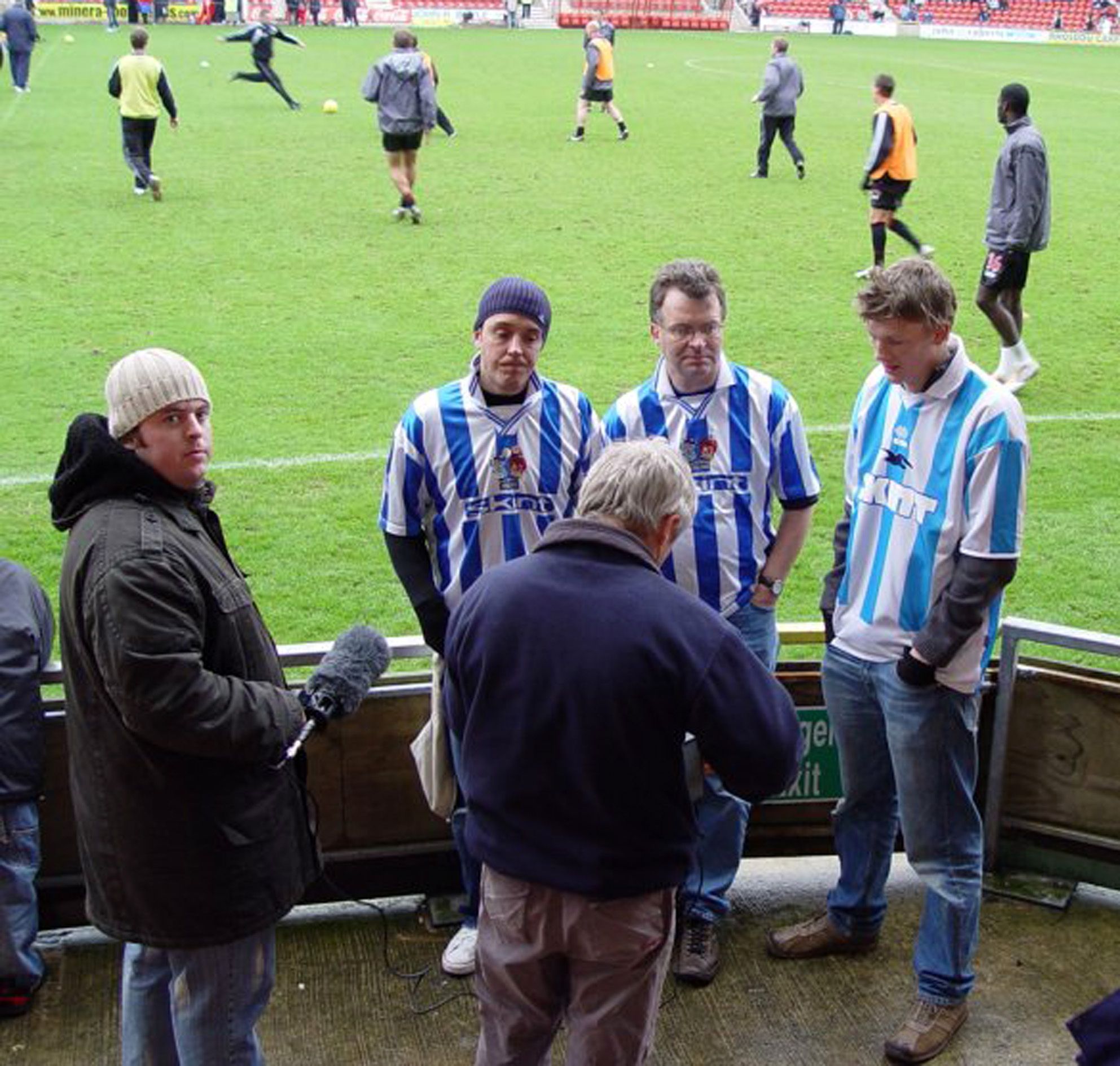
Nic Outterside can’t help but smile when he looks at the certificate on his wall.
Dated December 2004, the document is a personal thank-you from former Brighton & Hove Albion chairman Dick Knight, expressing gratitude to Nic for raising £200 for the football club.
“£200,” Nic chuckles. “That’s barely anything these days, is it?”
Having covered Brighton football club as an author and journalist for many years, Nic remembers all-too-well when a couple of hundred felt like a fortune. He also recalls when 2,000 - not 30,000 - people were scraping through the turnstiles, and when football in Brighton was an endangered species.
Before advertising guru Knight seized control of the club in 1997 and made Brighton & Hove Albion FC as integral to the city’s landscape as the Royal Pavilion or the Palace Pier, a cabal of politicians and magnates were attempting to strip the club of its assets to make a quick buck.
Businessman Bill Archer bought the financially struggling club in 1993 and later hatched a plot with ex-Eastbourne MP David Bellotti to sell Albion’s Goldstone Ground stadium - the club’s home for nearly 100 years - to retail park owners, leaving the team without a place to play.
“They saw an opportunity when a club was on its knees,” Brighton supporter Warren Chrismas recalls.
“When clubs become worthless, they’re cheap to snap up. Archer bought us for £56.25, and later found himself the owner of a prime piece of real estate in Hove.
“Luckily, we had some smart fans who were able to look into what he was doing.”
As the malevolent plan became clear, supporters organised demonstrations, marches and walkouts. There was even one match where fans bleated whistles for 90 minutes.
But there were more belligerents in this conflict than just fans and tycoons. The media also tooled up and chose the wrong target, ignoring the wounded club in peril and taking aim at “troublemaker” Brighton supporters.
Warren remembers that when one protest took place inside Goldstone - with Brighton fans tearing down the goalposts in a display of defiance - the 9pm news framed the incident as an act of isolated “hooliganism”, ignoring the real reason as to why it was all happening. On another occasion, when Warren and some other Brighton fans were invited to the TV studios to talk about their club’s predicament, they were greeted by police dogs upon their arrival. Bellotti was already there and Archer tuned in by video link, suffocating any attempts to expose the regime for what it really was.
“We were stitched up good and proper,” Warren sighs.
The whole world seemed to be against Brighton fans, and by the turn of the new year in 1997, as if being left homeless wasn’t bad enough, relegation beckoned.
“We’d gone on a run of form that left us 12 points adrift at the foot of the league,” Nic remembers.
“We knew then, having lost the ground, that if we got relegated the club would fold. There was no two ways about it.
“There were no other options.”
A fortune-changing weekend
The internet was still in its infancy in the mid-to-late nineties. Most people either didn’t have access or were still trying to figure out what the World Wide Web was for, with just 200,000 websites floating around in cyberspace in 1996.
Importantly, one of them was The Seagulls Server.
An online messageboard hosted by a Brighton exile living in the Isle of Man, this domain became a vital tool in the mission to rally fans to back Brighton in their fight to survive - hosting an online guestbook allowing people to post messages of support. One contributor was teenage Plymouth Argyle fan Richard Vaughan, who wrote that different clubs should all get together at the same game for one day.
It was this message that served as the catalyst for Fans United - a match where various supporters would lay down their arms and come bearing white (and blue) flags to support Brighton.
“Nothing like it had been seen before,” says Warren, who played a major role in getting the concept off the ground.
“There was a real community spirit on the internet amongst football fans, then. It was a different game. You probably couldn’t do it now. The idea would just be shot down on Facebook and Twitter. There’s a lot more cynicism about it these days.”
Not that the original Fans United was universally beloved. Some supporters groups feared trouble was inevitable, whilst others expressed concerns that a big attendance would just be putting money in Archer’s pocket.
By this stage, though, the horse had bolted. Warren had already passed along a package of Fans United promo material to BBC broadcaster Danny Baker, who loved the idea and implored his listeners to go along, telling them it would be an amazing occasion.
“And it was amazing,” Warren says, a warm sense of nostalgia creeping into his voice.
On 8 February 1997 - a weekend where top tier football was on international break so there were no distractions - Fans United attracted the biggest crowd of the season to Brighton’s Goldstone Ground.
Supporters from around 80 clubs were in attendance, with colours spotted from all around Britain and across the continent (like Germany’s Eintracht Frankfurt and Serbia’s Red Star Belgrade).
“The atmosphere was uplifting from minute one,” Warren gushes.
“It was a horrible misty day where you could barely see from one end of the pitch to the other, but the whole thing was a carnival.”
Brighton won 5-0 against Hartlepool United in front of 8,000 people, and Nic says the club’s “fortunes changed as of that weekend”.
“It was that vital moment we needed,” he explains.
“After Fans United, there was new belief.”
Brighton went unbeaten for the rest of the season at home, securing their league status with a 1-1 draw at Hereford on the final day (who went down instead). And things slowly got better after that. The Goldstone Ground was gone, but Knight had wrestled the club away from Archer - securing temporary residence at Gillingham and then Withdean athletics stadium where they won back-to-back titles in 2001 and 2002 (before finally moving into their current home Falmer in 2009).
And that was it. The dramatic Brighton tale all wrapped up nicely: A rollercoaster with heroes, villains, conflict, drama, a beginning, a middle and a happy conclusion. It should’ve been the end of the story. And it might have been, had the character of Archer been an anomaly.
But as avaricious men repeatedly tried to cash in on football clubs, the Fans United concept took on a life of its own. The occasion had not only given Albion the strength to haul itself from the abyss but had instilled a sort of vigilantism in its fanbase.
Someone had taken Brighton’s ground once upon a time. But they weren’t going to let the same thing happen to other clubs if they could help it.
Suddenly… it grew legs
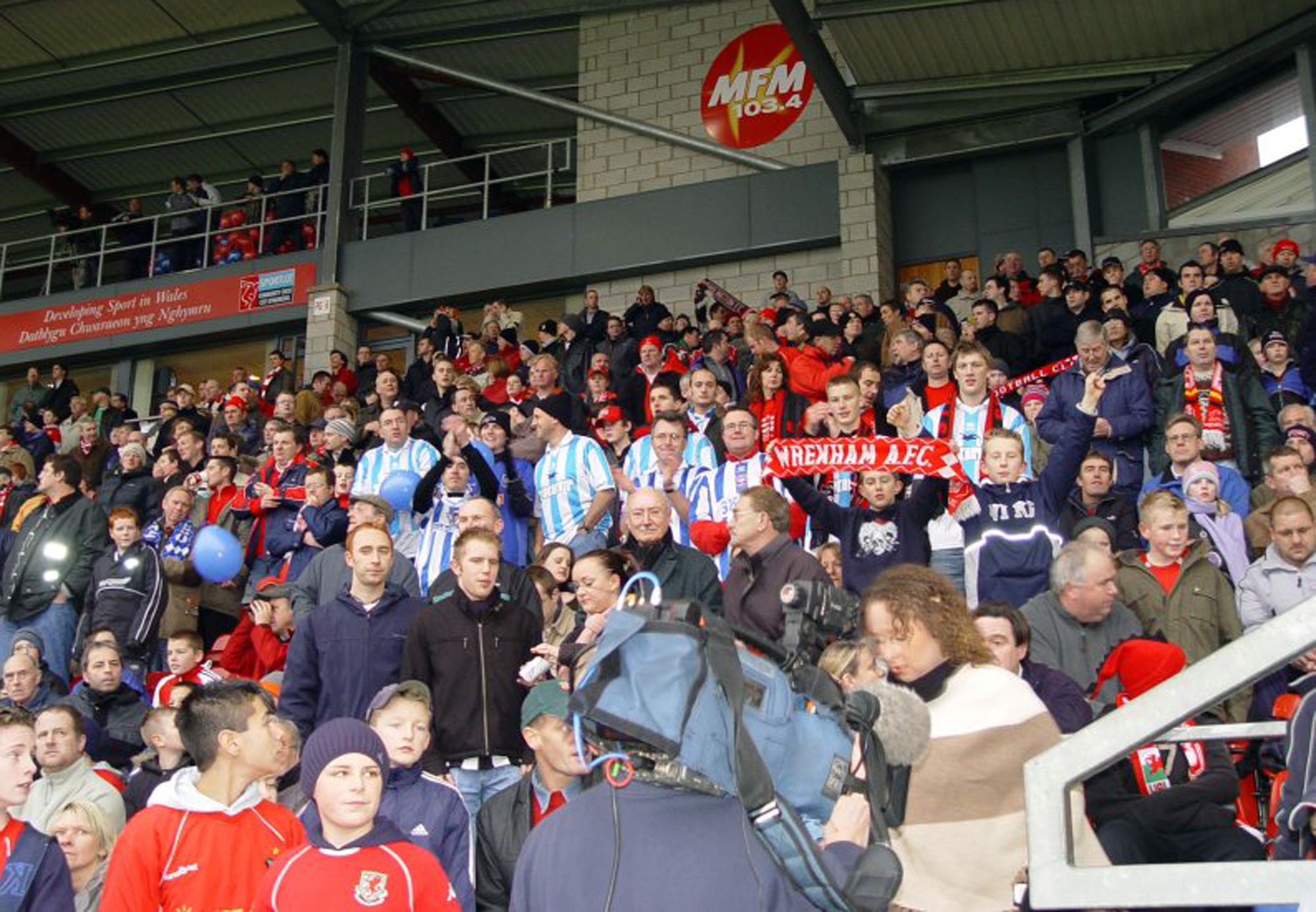
Things were good in Brighton in May 2004.
The team were playing well - pushing for promotion back to the second tier of English football - and their problems of the past seemed far behind them.
But then, they visited Wrexham on the final day of the season. As the Welsh fans passed out ‘red card’ flyers containing information on how their owner was trying to sell Wrexham’s Racecourse stadium - the oldest international ground in the world - to a supermarket, it rang a jarring bell among the Seagulls support.
“We’d been there before - and we decided we wanted to help,” says Nic.
A few months later, a cadre of Brighton fans travelled with Wrexham to show their support during a game at Doncaster Rovers.
The Seagulls had previously joined Doncaster fans in storming the directors box of their unscrupulous owner Ken Richardson - who attempted to burn down Doncaster’s stadium for the insurance money - so they were greeted warmly when they returned to Yorkshire in 2004 with Wrexham, even being invited onto the pitch. Nic was among them, and he ended up chatting to Radio 5 Live on the way home, realising the story - Brighton supporting Wrexham at Doncaster - had captured the imagination.
“It made us think - can we replicate Fans United at Wrexham?” he says.
“I put out press releases to North Wales media, emailed every single fan site and suddenly it grew legs… and then the legs got longer!”
On 20 November 2004, Wrexham kicked off against Bristol City - with the kick-off delayed by 15 minutes due to crowd congestion - and The Racecourse was awash with a rainbow of colours and crests. Over 1,000 people from other teams - Grimsby, Stockport, Northampton, Everton, Wolves, Cardiff, Bury - were in attendance on top of 7,000 Wrexhamers, and stewards allowed them all to pour onto the pitch at half-time with a banner reading “We shall not be moved”.
It was a magnificent and heart-warming display of people power steered by Seagulls fans. Choruses of “We love you Brighton” rang around Wales all weekend long, and Nic said he “lost count” of the number of Welsh hands he shook.
“It all sent shivers down my spine,” he recalls.
The odd couple
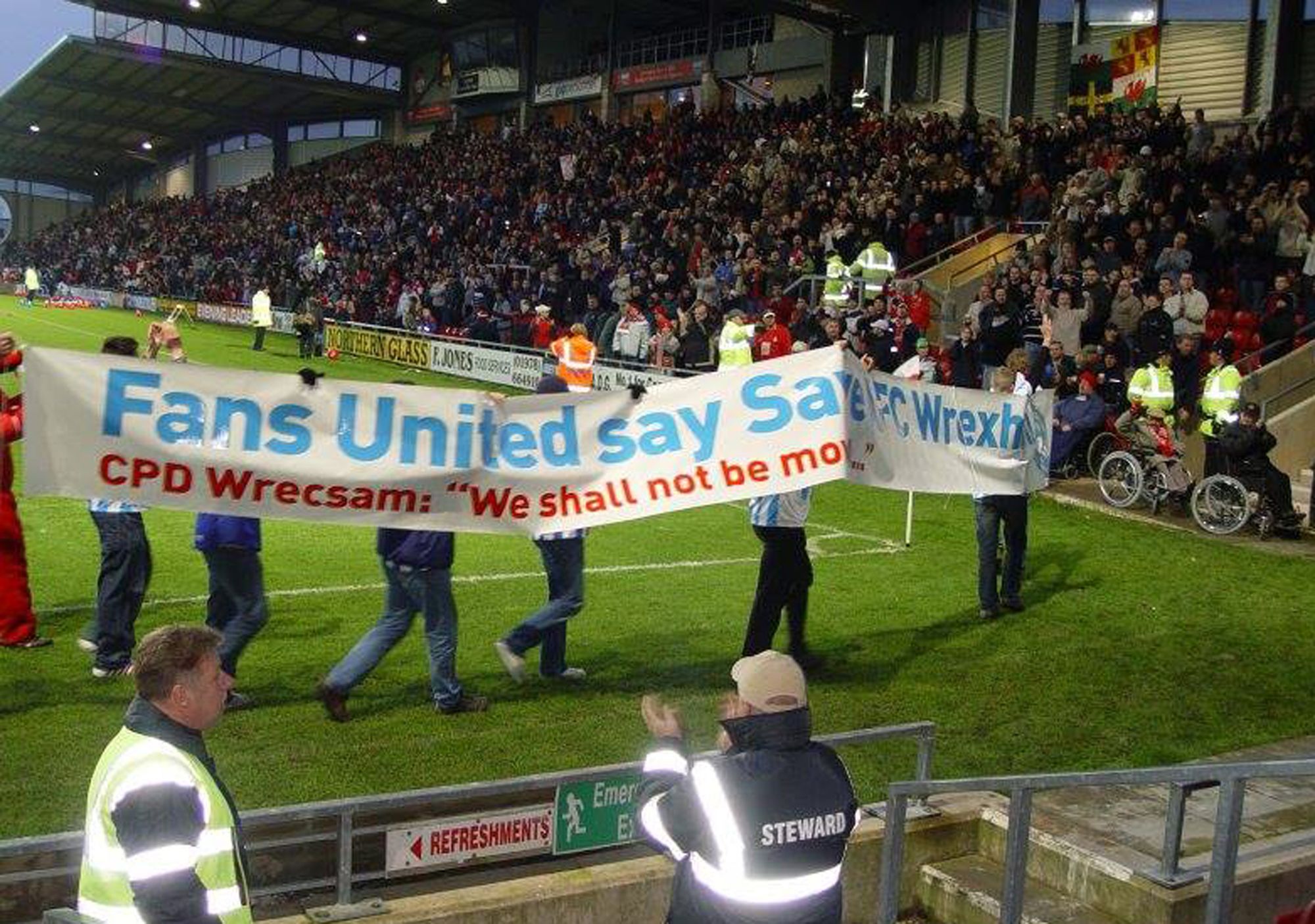
Wrexham lost the battle on their Fans United Day, defeated 3-1 by Bristol City. They also lost their league status in the following months after suffering relegation. But crucially, they won the war. The fight to keep The Racecourse - today the set of Welsh football’s first Hollywood movie where a documentary titled Welcome to Wrexham is being shot - remained out of developers' hands.
After learning of Wrexham’s predicament, Brighton fans could have simply shaken their heads, sighed, and pressed on with another promotion challenge. Wrexham was a different world to them - red not blue, Welsh not English, sheep not seagulls. But despite the two regions bearing little resemblance or traits in common, they’ve become firm friends: An odd couple brought together by football.
“There’s nothing really similar about the places, but as football communities we’ve both gone through the same experiences in a very similar way,” Nic says.
“It’s great we’ve maintained such a close relationship.”
The main parallel these days is that both Wrexham and Brighton believe in their owners. Whilst Reynolds and McElhenney are lauded as fun-loving superstars in Wales, Sussex is right behind Albion chairman Tony Bloom - who took the reins from saviour Knight in 2009 and has been voted as the second most popular Premier League owner after Leicester City’s Srivaddhanaprabha family.
The Wrexham Hollywood experiment remains in its beta phase and is yielding some wonderful early results for the club and wider town, and whilst its unclear what kind of legacy “RR McReynolds” will leave behind, there can be no denying the success of this first chapter.
Wrexham are starting to feel a little more at home on the red carpet, with Reynolds calling his most recent trip to The Racecourse a “top ten life moment” and McElhenney claiming every matchday is like “Christmas Day.”
It seems likely that the upcoming documentary will focus on the club’s newfound stardom and the exciting future, rather than dwell on the past.
But who knows. There might have been no movie to shoot if the Seagulls had not become Dragons for a day.
Gareth is a freelance journalist from North Wales, writing for sports, music, culture and news publications across the UK. You can follow him on Twitter via @gazwxm1.

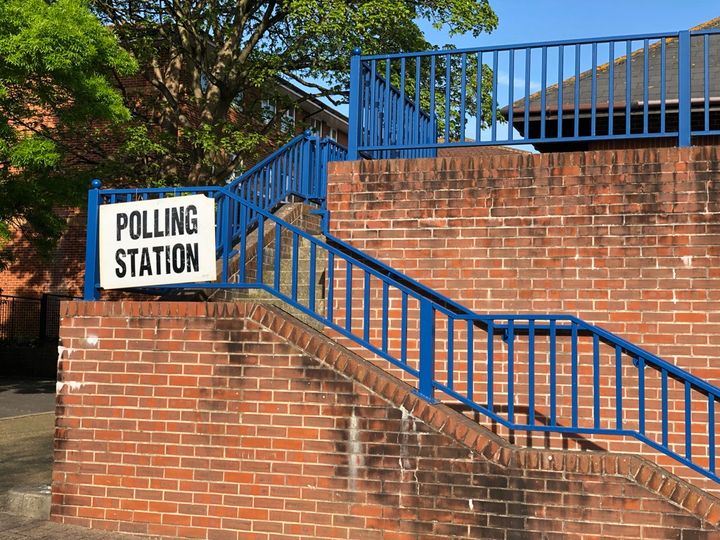
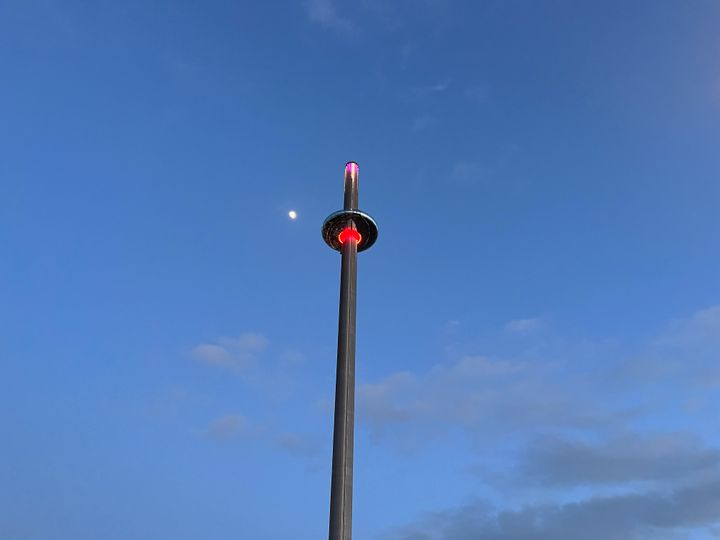
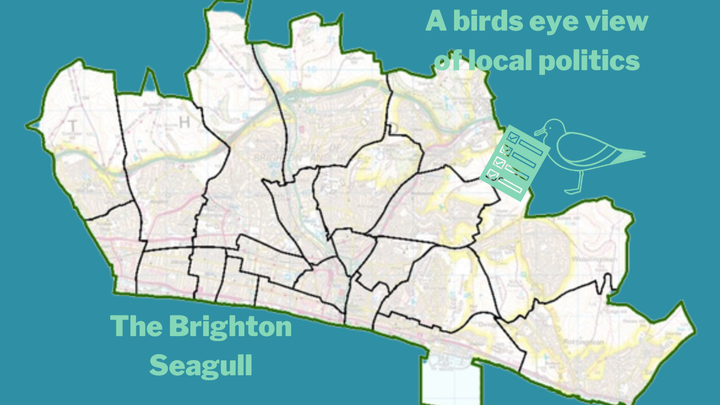
Comments ()